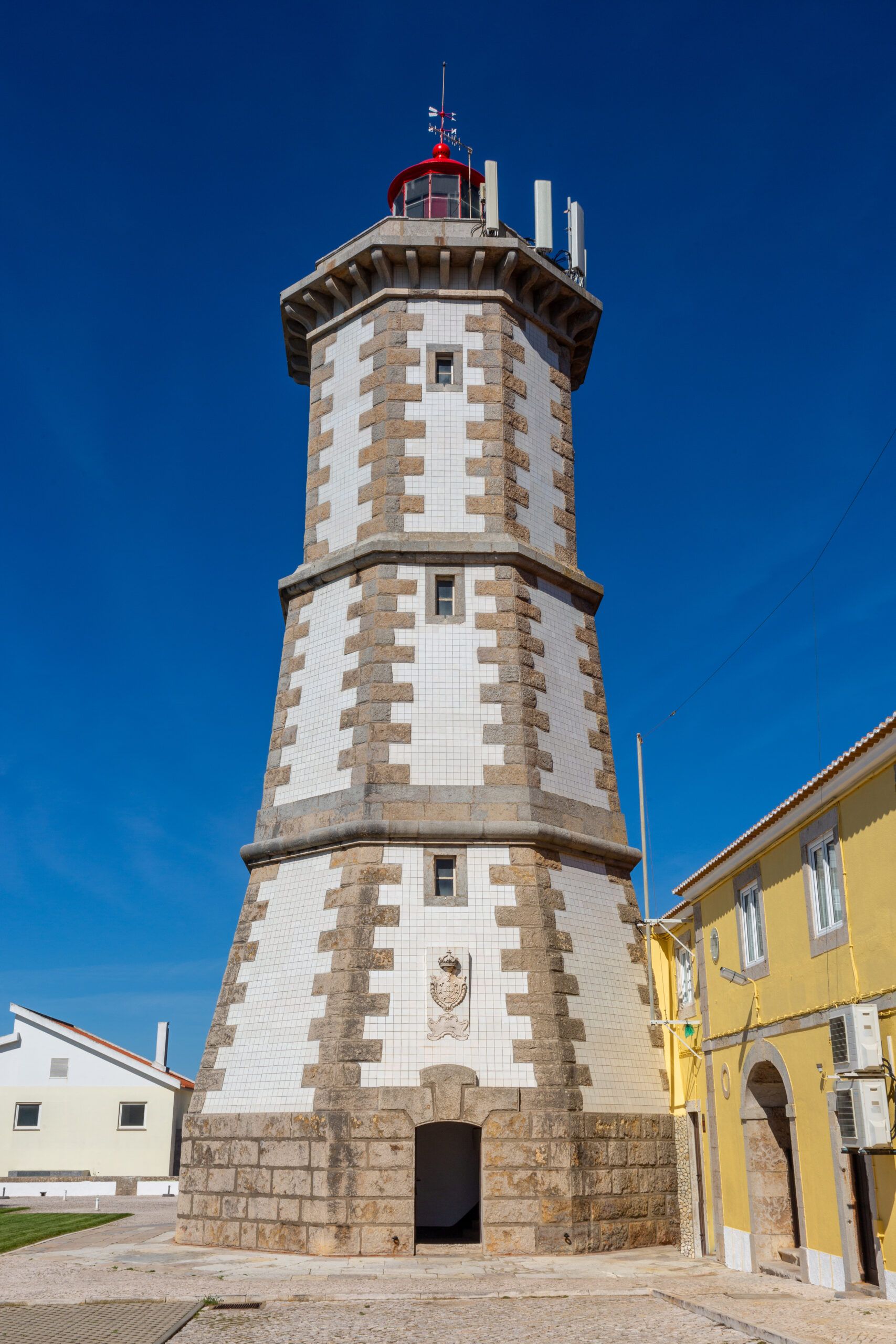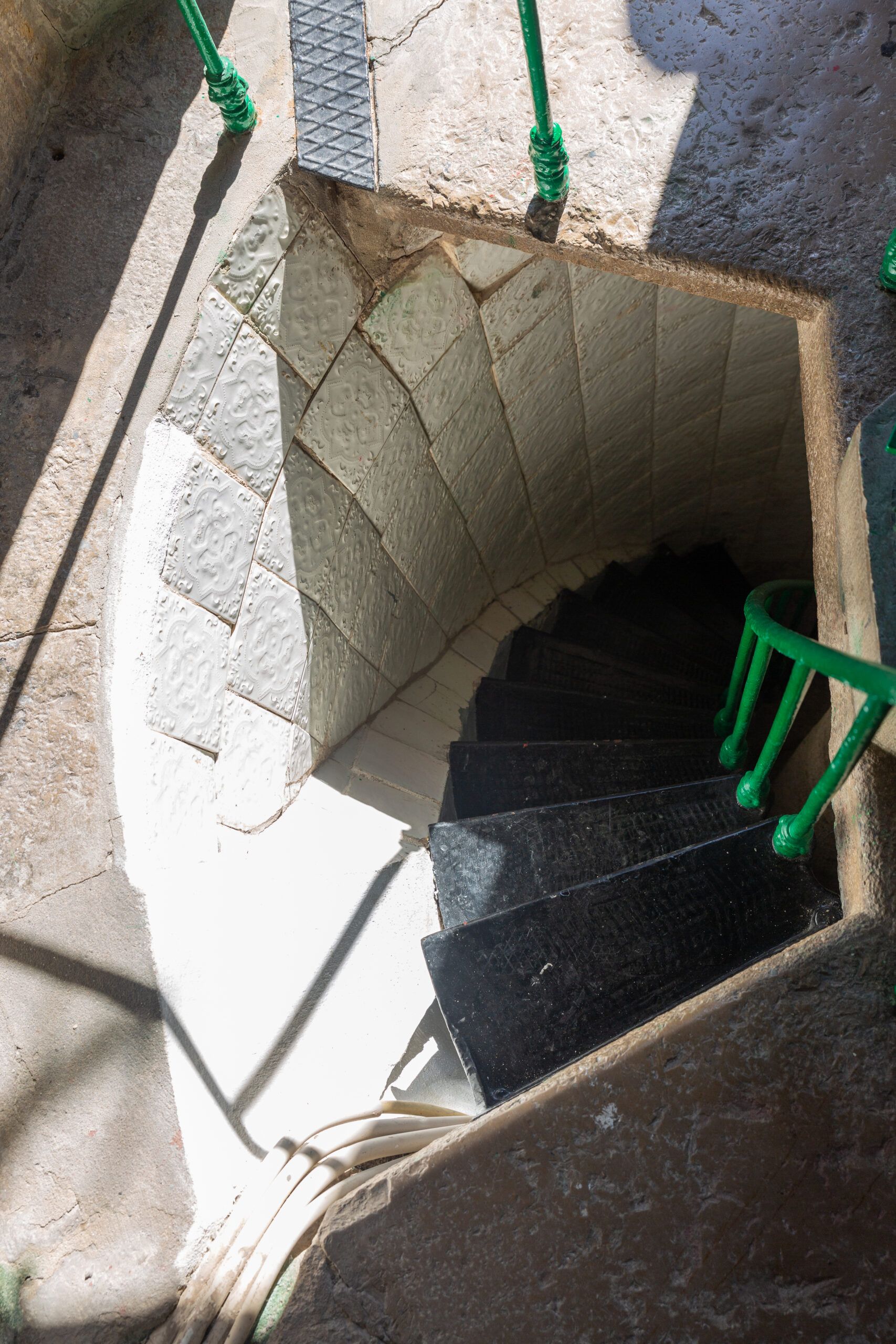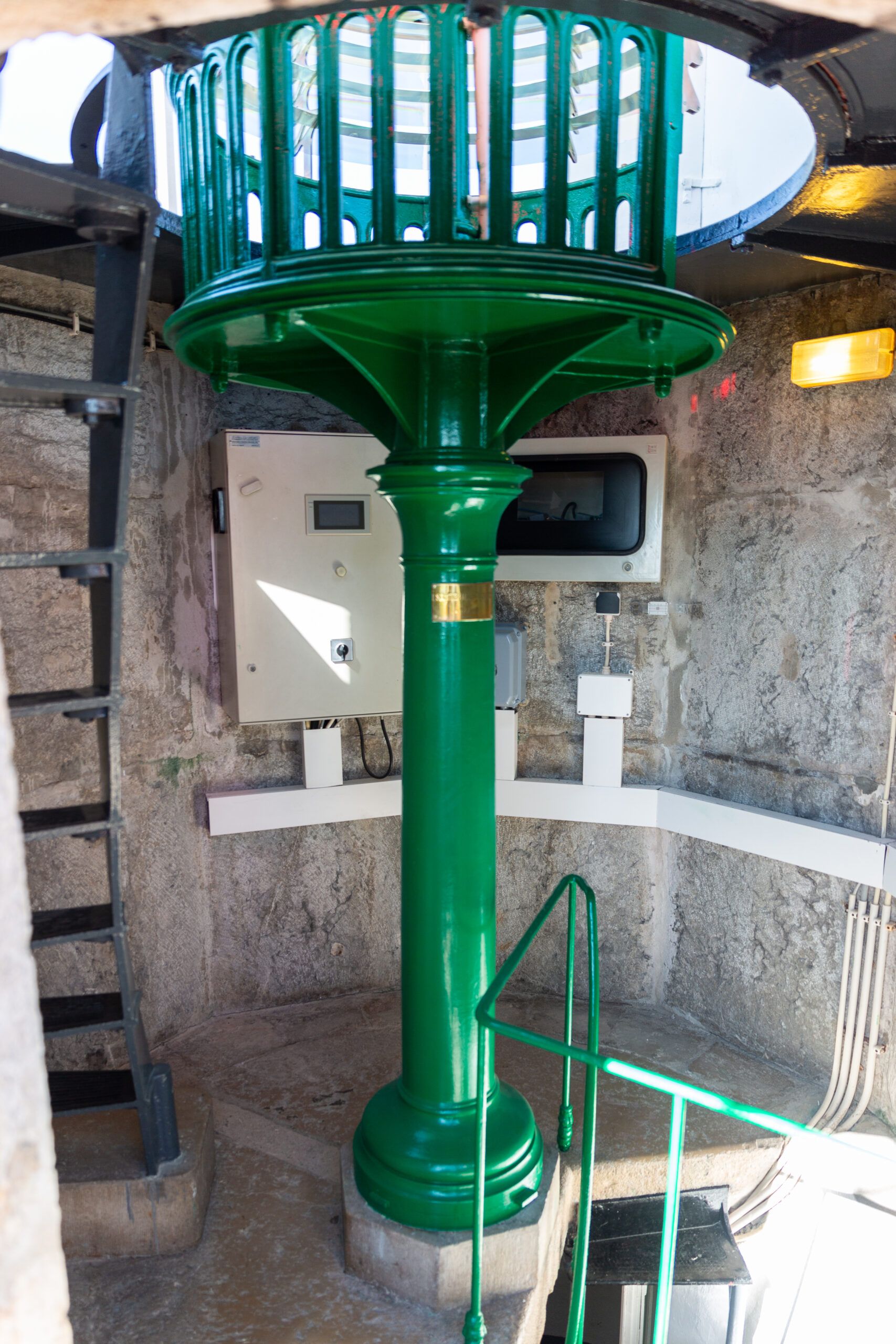Guia Lighthouse / Farol da Guia (Portugal)

|
Position: |
|
Height of Tower: |
28 metres |
|
Altitude: |
58 metres |
|
Character: |
ISO WR 2s |
|
Range: |
19 nautical miles |
The Guia Lighthouse, located about 2 km West of the center of Cascais, Portugal, is an emblematic structure. Its construction dates back to the 16th century when the region was illuminated by the Chapel of Our Lady of Guia, established in 1523.
The controversy over the antiquity of the Guia Lighthouse, near the Chapel of Our Lady of Guia, is a matter of debate among scholars. Although the lighthouse of Our Lady of Light, erected in 1680 near the mouth of the Douro River, is commonly considered the country’s first functional lighthouse, historical records suggest that elevated points were previously used to light bonfires, known as beacons or lookouts, for maritime guidance purposes. This practice dates back to periods preceding the era of lighthouses as we know them.
While some argue that its construction dates to the early 16th-century, others contend that its operation began in 1537. Historical claims suggest that the brotherhood of Our Lady of Guia built a tall tower, adjacent to the chapel, supplied with a lighthouse consisting of four or five oil lights, intended to guide sailors. If this narrative is true, the Guia Lighthouse would have been the second lighthouse established on the Portuguese coast, preceded only by the lighthouse at Cape St. Vincent, built by friars from the area.
In 1537, the tower of the Guia Lighthouse was erected to house oil lights that served as guidance for local sailors. The oil lights were fueled by vegetable oil, which was burned in lamps or special lamps inside the lighthouse. In this system, the oil was placed in particular reservoirs and conveyed to the lamp through tubes or wicks. The lamp was then lit, generating a flame that illuminated the lighthouse lantern and provided a relatively stable and reliable source of light, although not as bright or efficient as later technologies.






Despite its antiquated use, oil lights were widely used in lighthouses around the world for many centuries, playing a crucial role in maritime signaling and guiding sailors during the night or in conditions of low visibility. The presence of these lights not only facilitated navigation but also played a vital role in protecting vessels from the dangers of coastal waters. For about eight months a year, the local brotherhood was responsible for keeping the lights of the Guia Lighthouse lit, ensuring the safety of ships that approached the coast.
Another historical date for the Guia Lighthouse was 1st November 1755, a date associated with the earthquake which devastated Lisbon. Consequently, a tsunami occurred, reaching impressive heights of up to 20 meters. This earthquake was one of the deadliest in history, and seismologists believe its magnitude was between 8.7 and 9 on the Richter scale. It caused severe damage to the tower, resulting in extensive reconstruction work and equipment replacement.
Throughout its existence, the Guia Lighthouse has undergone various transformations and repairs. After the 1755 earthquake, it was rebuilt according to legislation promulgated by the Board of Trade in 1758, officially receiving the status of one of the six planned lighthouses along the Portuguese coast, by decision of the Marquis of Pombal.
In 1761, the tower was completed, offering a structure similar to the current one. Records suggest that, in 1812, its light became permanent, marking its continued importance for navigation. Subsequently, in 1879, the lighthouse was equipped with a modern third-order lenticular apparatus, replacing the previous system of parabolic mirrors.
Throughout the 20th century, it underwent various technological modernizations, including electrification in 1957 and automation in 1982, becoming an integral part of the tele-control network of the lighthouses approaching the port of Lisbon.
The current lighthouse projects a fixed white light through 16 Argand lamps, reaching 13 nautical miles in good visibility conditions and covering a sector of 240º. Its masonry tower, with eight faces and 23 meters high, was adorned with white tiles in the 19th century, which were replaced in April 2003.
Currently, the Guia Lighthouse no longer has a full-time crew as before, but its facilities are used by lighthouse keepers working in the Lighthouse Directorate. Furthermore, the remote control system has been replaced by a monitoring system that sends SMS messages to the lighthouse keeper’s cell phone in case of any difficulty, ensuring consecutive maritime safety in the region.
As a historical witness to the prominence of navigation in Cascais, the lighthouse symbolizes a fundamental landmark in the maritime safety of the Portuguese coast. Its rich history and continuous presence reflect its importance as part of Portugal’s maritime heritage.
Brief History of Lighthouses in Portugal
In Portuguese territories, lighthouses played an increasingly crucial role in nautical safety, beginning with the first one recorded in 1520 at Cape St. Vincent, located near Sagres. In the 18th century, the responsibility for the construction and maintenance of lighthouses was assumed by the State, by order of the Marquis of Pombal, who ordered in 1758 six lighthouses to be built, including the Guia Lighthouse.
Over the years, the network of lighthouses has been expanded and modernized, with new technologies incorporated to improve the efficiency and range of the lights, ensuring safer navigation for sailors. In 1881, the Lighthouse and Beacons Commission was established, a significant milestone in the history of maritime signaling in Portugal. This commission, chaired by the Director-General of Posts, Telegraphs, and Lighthouses, Guilhermino Augusto de Barros, had the task to develop and implement a comprehensive plan, approved in 1883, for maritime signaling, identifying priority areas for the installation of new lighthouses and beacons, as well as for the modernization and maintenance of existing ones. Their work was fundamental in ensuring safe and efficient navigation along the coast, protecting vessels and promoting the country’s economic development.
Since 1978, a lighthouse automation program was introduced in the country, whose primary objective was to ensure the spontaneous activation of backup systems for the essential functions of the lighthouses, eliminating the need for immediate human intervention. Lighthouses subjected to this automation procedure do not require direct surveillance and become remotely controlled from command centers. In these facilities, it is possible to obtain detailed information about the operational status of adjacent lighthouse equipment.
A paradigmatic example of this procedure is the control center for the lighthouses used for the approach and admission to the port of Lisbon, currently operated by the Lighthouse Directorate. This center employs devices that enable remote control of the main functions of the lighthouses, thus promoting their effectiveness and safety.
Today, Portuguese lighthouses represent not only points of guidance for sailors but also symbols of the rich maritime history and determination of the country to ensure the safety of maritime routes. Through centuries of evolution and modernization, Portugal’s lighthouses continue to illuminate the way for safe and successful navigation along the Atlantic coast.
Portugal’s maritime history is deeply intertwined with the presence of lighthouses along its coast. These imposing structures played a crucial role in navigation safety and guidance for sailors, especially at strategic points such as the Guia Lighthouse.
Sources:
Aguilar, J. Teixeira de, Santandreu, R., & Nascimento, J. C. (1998). Onde a Terra Acaba: História dos Faróis Portugueses. Lisboa: Pandora.
Faróis de Portugal. (n.d.). Associação Nacional de Cruzeiros. Retrieved from https://www.ancruzeiros.pt/far%c3%b3is-de-portugal
Farol da Guia (Cascais). (2007, May 25). In Wikipedia. https://pt.wikipedia.org/w/index.php?title=Farol_da_Guia_(Cascais)&action=history
Farol da Guia. (2011). Sistema de Informação para o Património Arquitetónico. Retrieved from http://www.monumentos.gov.pt/site/APP_PagesUser/SIPA.aspx?id=12723
Farol da Guia. (n.d.). Autoridade Marítima Nacional. Retrieved from https://www.amn.pt/DF/Paginas/FaroldaGuia.aspx
Farol de Santa Marta. (n.d.). Autoridade Marítima Nacional. Retrieved from https://www.amn.pt/DF/Paginas/FaroldeSMarta.aspx
Farol do Bugio. (n.d.). Autoridade Marítima Nacional. Retrieved from https://www.amn.pt/DF/Paginas/FaroldoBugio.aspx
Farol do Cabo da Roca. (n.d.). Autoridade Marítima Nacional. Retrieved from https://www.amn.pt/DF/Paginas/FaroldoCabodaRoca.aspx
Silva, A. (2015). Faróis de Portugal: Navegação e Segurança Marítima. Porto: Edições Marítimas.
Sismo de Lisboa de 1755. (2004, July 20). In Wikipedia. https://pt.wikipedia.org/wiki/Sismo_de_Lisboa_de_1755
The History of Cabo da Roca Lighthouse. (n.d.). Parques de Sintra. Retrieved from https://www.parquesdesintra.pt/en/parks-monuments/cabo-da-roca-lighthouse/history/